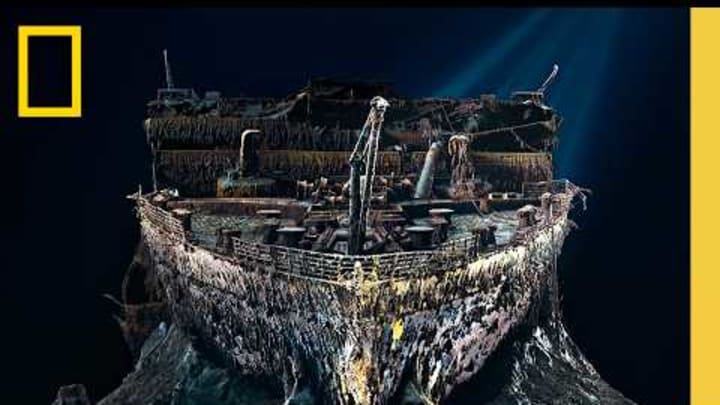Salvage experts and Titanic historians have been warning that the wreckage of the ship is likely going to erode beyond recognition in the coming years. Thanks to a newly-completed 3D replica, it can now live on in the digital world long after the real thing has disintegrated.
A new documentary from National Geographic, Titanic: The Digital Resurrection, chronicles the efforts of mapping company Magellan to create an exhaustive digital rendering of the ship. By sending cameras 12,500 feet below the surface, the project was able to capture roughly 715,000 still images of the wreckage site, along with 4K video, for a total of 16 terabytes of data. NatGeo claims the result is a “full-scale, 1:1 digital twin” of the Titanic.
The film enlists input from experts like Titanic analyst Parks Stephenson, metallurgist Jennifer Hooper, and others to scrutinize the ship’s digital double. In addition to being valuable for posterity, the project has already shed new light on some popular Titanic theories.
Per NatGeo, the scans reveal that a steam valve is fixed in an open position, indicating workers remained behind after the vessel struck an iceberg to ensure electricity remained on and distress signals could be sent. The film also aims to exonerate the long-maligned William Murdoch, who has been accused of abandoning his post and even harming passengers. The scans reveal a lifeboat likely meant for Murdoch was preparing to launch moments before the ship took a turn for the worse, supporting accounts that he was ultimately swept into the ocean.
The project indicates the ship wasn’t split in half as cleanly as previously believed and was instead ripped apart in a violent manner. Magellan was also able to scan a 15-square mile radius around the wreck, identifying several personal possessions of passengers that Titanic experts now hope to connect with their original owners.
Magellan first launched the project in 2022, sending camera-equipped remote vehicles dubbed “Romeo” and “Juliet” to the site. It took three weeks to render the ship and two years to assemble the still images into a cohesive portrait. From there, researchers could perform a “walkthrough” in and around the vessel to learn more about its final moments, though some of what they’ve extrapolated is certainly conjecture. Camera bots were not permitted inside the ship; they were only allowed around it.
The “digital twin” comes as salvage operations to the site have slowed in recent years. A 2017 federal government ruling classified the wreckage as a memorial site, making expeditions legally murky. The ship’s worsening condition—bacteria is literally eating away at the iron—can also prove risky for expeditions.
There may come a time when a virtual tour of the site is possible. “The model, as it is, is a fully 3D model, so you could create a VR experience,” Will McMaster, a technical director on the project, said in the special. “Because it's 3D data, you could render it out in 360-degree video. You could put on a VR headset and explore the wreck with real-time 3D graphics.”
The Titanic sank in April 1912 and the wreckage site discovered in 1985. Titanic: The Digital Resurrection is currently streaming on Hulu and Disney+.
